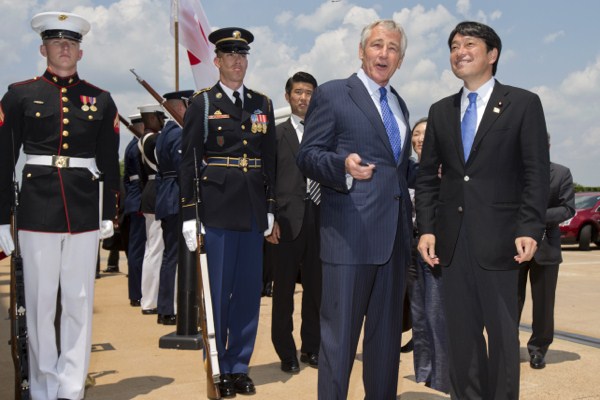On Oct. 8, after a year of intense effort, the Japanese and U.S. governments released an interim progress report on planned revisions to the guidelines framing their militaries’ respective roles in the joint defense of Japan. The report does not identify specific threats or discuss detailed scenarios for joint military operations, but it does provide a series of principles guiding the revisions and lists some types of cooperative activities they will cover. These principles and examples make clear that the two countries plan to expand the range of possible operations both geographically and functionally.
The two governments’ foreign and defense ministers agreed last October to update the guidelines, which were last revised in 1997. Japanese and U.S. officials have cited the need for the new text to address a greatly changed security environment. Although they declined to identify China’s rising power and assertiveness as a threat, this is clearly a main driver of the changes. The threat from North Korea has also evolved, due to a more unpredictable leader in Pyongyang and the country’s three nuclear weapons tests. Transnational terrorism has also become more threatening, while Japanese and U.S. cyber and space assets have become less secure. The State Department said that the guidelines would be revised further as circumstances warranted.
To address these new geographic and functional challenges, the interim report indicates that the new guidelines will discard some geographic barriers defining the roles and missions of the two countries’ armed forces. Japan will still have primary responsibility for its self-defense against an armed attack on its territory, but the United States will more explicitly commit to helping the Japanese government manage major domestic emergencies. Rather than limit joint operations to certain types of contingencies in Japan’s vicinity, moreover, the report says that the revised guidelines will describe how the two militaries will collaborate in cases of an “armed attack to a country that is in close relationship with Japan.” The phrase “close relationship” could cover countries with extensive economic and other ties with Japan as well as those physically close to the Japanese islands. When asked what particular air and sea zones the two militaries would seek to keep open for international use, Daniel R. Russel, the U.S. assistant secretary of state for East Asian and Pacific affairs, explained that “these are global principles . . . [designed to allow] all trading nations to utilize international waters, international airspace, and increasingly international cyberspace.”

